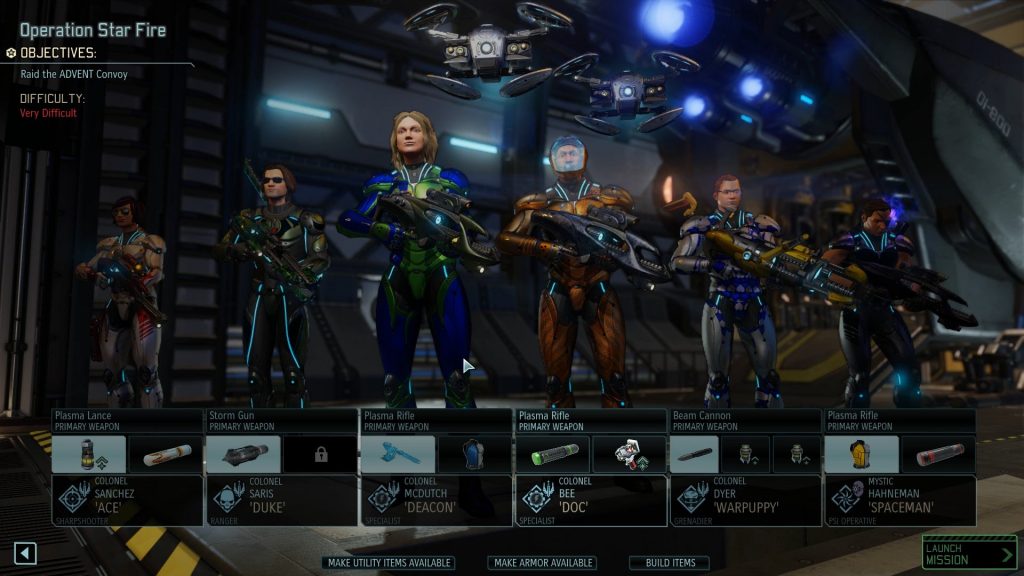
I’ve finally gotten around to playing XCOM 2, and while I was having a fantastic time in my initial playthrough, it eventually became apparent that I’d been developing my team of soldiers incorrectly and that I would have to start over again if I wanted any chance of saving the world. Unfortunately, I was already about 25 hours into the playthrough, and the idea of starting over and losing all of my progress was disheartening to the point that I almost set aside a game that I was really enjoying.
My solution? Get more involved in the character customization.
Like many games, XCOM 2 allows the player to change just about everything about the playable characters. Physical traits, outfits, voice-sets, even nationalities and nicknames are free for customization. I took my time crafting each member of my team (this took a while, since my entire roster soon had more than 20 members!) and I soon found myself having even more fun than I had in my first playthrough.
This got me thinking about the concept of character customization in general. Why do so many games allow it? What purpose does it serve in the player’s experience?
Of course, not all games allow character customization. Many of the most popular franchises have characters whose likeness is a significant part of the branding. Games with in-depth storylines also tend to avoid character customization. The reason for this is that a character’s appearance and personality is often integral to the game’s setting and plot. If the character were a blank slate, the story would suffer.
However, character customization allows the player to put their own creative stamp on the story from the very beginning. In many ways, the experience is similar to reading a novel. When I write a novel, my goal is to have a collaborative experience with the reader. As I see it, my job is to provide just enough plot and specific details for the reader to then fill in the gaps with their own imagination. A customized character in a video game does something similar. By encouraging the player to participate in the creative process, the developer is sacrificing a little control in order to give the player a sense of ownership in their experience.
Of course, many games engage the player in creative ways other than just character customization. Branching story paths, dialogue options, and open-world gameplay can all help the player to take an active role in the story playing out before them. But by giving the opportunity to customize the character that goes on this adventure, the developers are offering a form of immersion that goes beyond just playing the game. At this level, the only way to get more involved in the creative experience is to sit down with some friends and do a pen-and-paper roleplay or write your own story.
However well-intentioned, character customization doesn’t always work the way the developer may have intended, and there are definitely some games that struggle to effectively implement it. For example, In Fallout 3, you’re allowed to create a character who looks about 70 years old, despite the fact that the story clearly shows that your character is in their early twenties. Another example is Dragon Age Origins, which allows you to craft a fairly detailed protagonist with a choice of six unique background prologues. However, in the actual game, the majority of dialogue interactions sound more appropriate for the generic human noble, even if you chose to be a former elvish slave or a casteless dwarf.
One of the more bizarre examples of character customization is from a game called White Knight Chronicles. This game is a fairly standard JRPG with all of the familiar tropes and mechanics with just one strange exception. At the beginning of the game, the player is prompted to create their own character, but because the game is full of voice-acted cutscenes and interactions, this character ends up standing around in the background silently emoting like an extra on a movie set trying to photobomb the rest of the cast as they progress through the game’s extended storyline.
Despite the shortcomings of some games’ attempts at character customization, I hope that developers will continue to provide this opportunity for gamers to express themselves creatively. Whether it’s a novel that millions of people will read or a customized character that is just for the player’s benefit, the act of creating is good for a healthy imagination and a happy soul.
A big shout-out to the fantastic members of my Readers Community:
Randall Hodgson, Mandy Vincelette, Matthew Paxman, Yoshiyuki Nishikawa, Wil Sisney, Jarred Walton, Joel Stanger, and Kelly Wilbur.
If you’d like to learn more about my Readers Community, check out the following link: